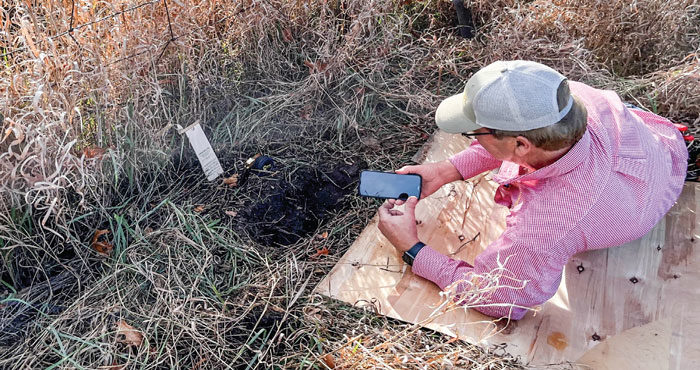No-Till Farmer
Get full access NOW to the most comprehensive, powerful and easy-to-use online resource for no-tillage practices. Just one good idea will pay for your subscription hundreds of times over.

NATURAL PROCESS. After talking about nutrient stratification on his fields at the 2022 National No-Tillage Conference, another farmer asked Marion Calmer if he had analyzed stratification on uncultivated ground. Calmer went home and soil sampled from a fence line in continuous bromegrass. Just like in his fields, he found natural soil fertility was highest at the surface. Photo: Marion Calmer
Alpha, Ill., No-Till Legend Marion Calmer has a confession. He broke the No.1 rule of being a no-tiller and moldboard plowed part of a long-term no-till field.
He decided to plow after discovering vertical stratification of phosphorus (P) and potassium (K) in his soil after decades of surface applications. His goal was to flip the soil so that the top couple of inches — where nutrient concentration was the highest — would be placed 8 inches deep where his corn and soybean roots grow.
Calmer’s decision to moldboard plow a 60-foot by 1,000-foot plot in one of his no-till fields to destratify the soil did not happen on a whim.
He first suspected he had a stratification problem in 2017 when he saw purple leaves in his corn crop, a sign of a P deficiency, even though his soil tests indicated he had adequate levels. This led him to sample the soil at an inch-by-inch depth, and he discovered that P and K were stratified. The highest nutrient concentrations were at the soil surface, and the lowest were 8 inches deep.

SPOTTING STRATIFICATION. After collecting soil test data from no-tillers and conventional farmers, Marion Calmer discovered that nutrient stratification can happen under both systems. The highest nutrient concentrations are in the first inch of soil for both no-till (L) and tillage (R), and steadily decrease at deeper depths. Source: Marion Calmer
“Where the roots are hoping to find fuel, the tank’s empty,” he…